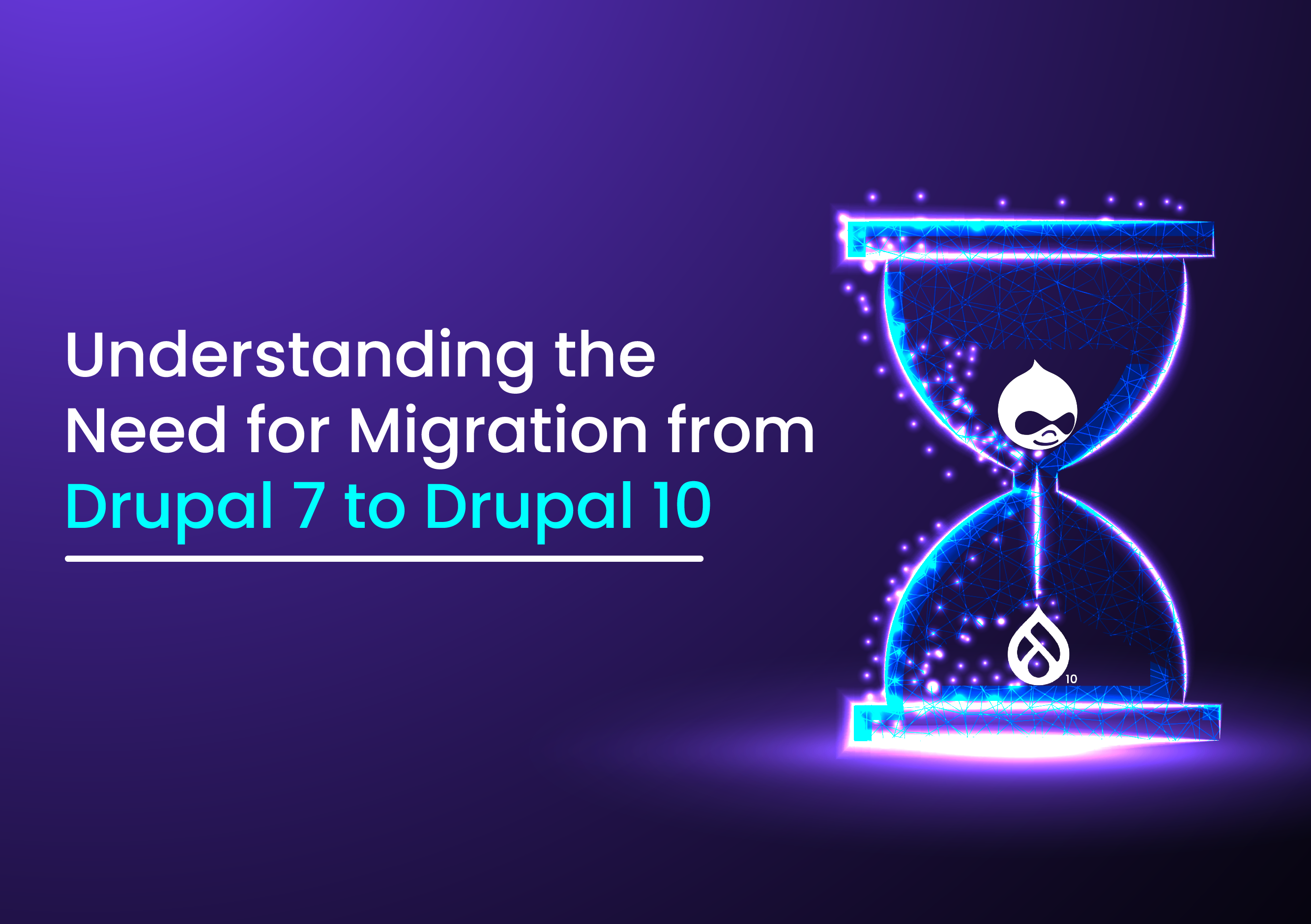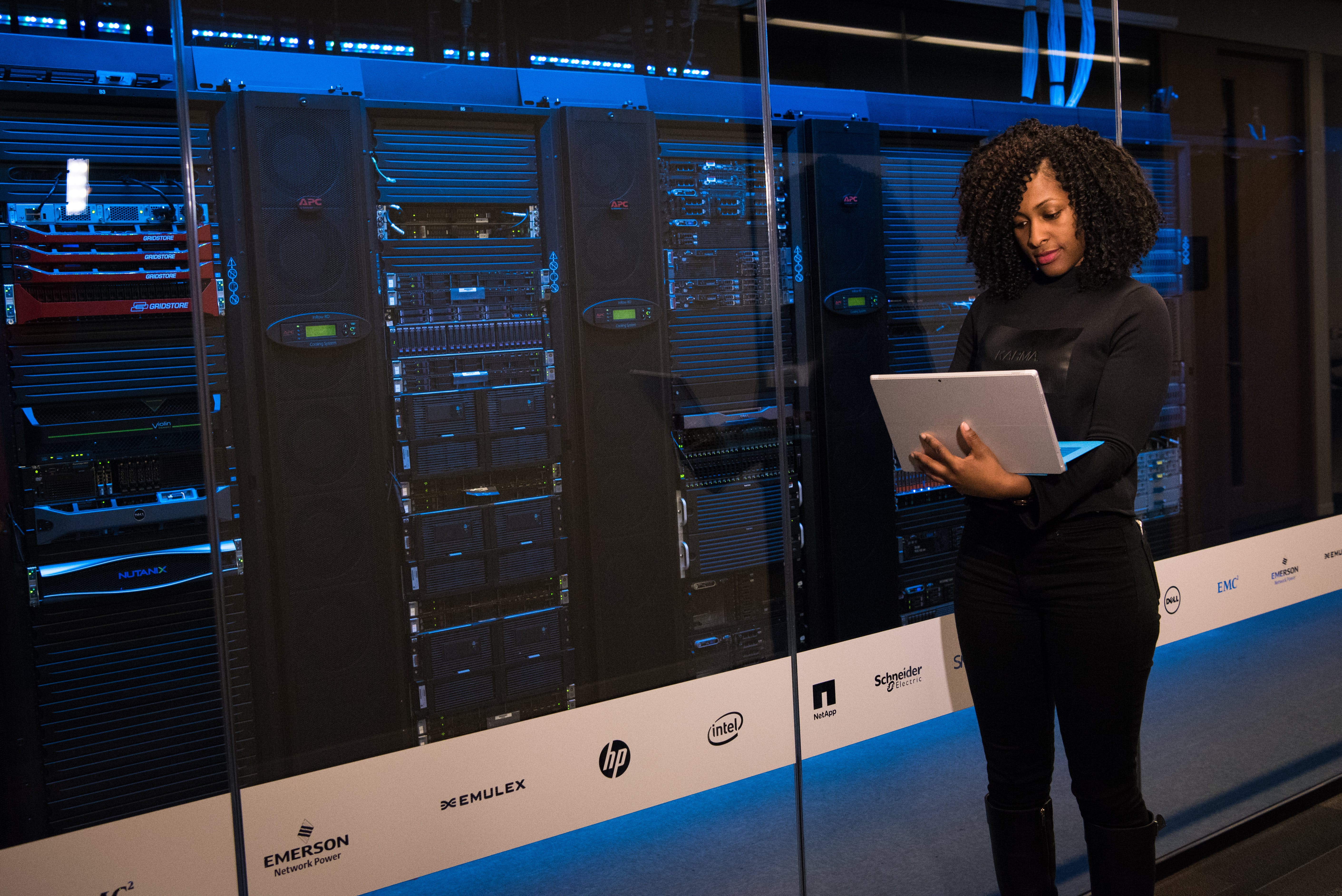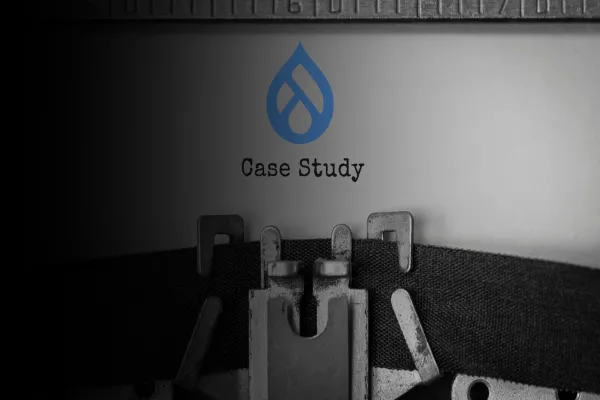In today's ever-evolving digital landscape, keeping up with the latest technologies and advancements is essential for any website owner. If you're currently running your website on Drupal 7, it's high time to consider migrating to Drupal 10. This comprehensive step-by-step guide will walk you through the entire migration process, ensuring a seamless transition to the latest version of Drupal.
Understanding the Need for Migration from Drupal 7 to Drupal 10

Before diving into the migration process, it's crucial to understand why migrating from Drupal 7 to Drupal 10 is necessary. Drupal has come a long way since the release of Drupal 7, with numerous significant improvements and enhancements introduced in subsequent versions.
Drupal 7 was a game-changer when it was released, but as technology progressed, so did the demands and expectations from websites. The web landscape has evolved, and users now expect faster, more secure, and more user-friendly experiences. Drupal 10 represents the culmination of years of development and innovation, offering improved performance, enhanced security, and a more user-friendly experience.
The Evolution of Drupal 7 to 10:
When Drupal 7 was first introduced, it revolutionized the content management system (CMS) market. Its flexibility, scalability, and extensive module ecosystem made it a popular choice for building websites of all sizes and complexities. However, as time went on, the limitations of Drupal 7 became apparent.
Drupal 10, on the other hand, builds upon the foundation laid by Drupal 7 and the subsequent versions. It incorporates the latest web technologies, best practices, and community feedback to provide a modern and robust CMS solution. With improved performance optimizations, streamlined workflows, and enhanced security features, Drupal 10 empowers website owners to deliver exceptional digital experiences.
Key Features and Improvements in Drupal 10:
Drupal 10 introduces a host of new features and improvements that make managing and maintaining your website easier and more efficient. One of the standout features is the revamped administrative interface, which offers a more intuitive and user-friendly experience. The interface has been redesigned to simplify common tasks, reduce the learning curve, and improve overall productivity.
Another significant improvement in Drupal 10 is its advanced content management capabilities. The new version provides enhanced tools for organizing, categorizing, and displaying content. With improved content authoring workflows, website administrators can create and publish content more efficiently, ensuring a seamless content creation process.
In addition to the administrative and content management enhancements, Drupal 10 also brings performance optimizations. The underlying architecture has been optimized to deliver faster page load times and improved scalability. This means that even as your website grows in size and complexity, Drupal 10 can handle the increased traffic and deliver a smooth user experience.
The Risks of Sticking with Drupal 7
Running a website on an outdated platform like Drupal 7 poses several risks. First and foremost, security vulnerabilities become a significant concern, as older versions are more prone to hacking attempts. As technology advances, so do the techniques used by hackers to exploit vulnerabilities. By staying on Drupal 7, you expose your website and its data to potential security breaches.
Moreover, outdated modules and themes may no longer receive updates and support. As the Drupal community focuses its efforts on the latest versions, the availability of updates for Drupal 7 extensions diminishes. This lack of updates can lead to compatibility issues with newer technologies and reduced functionality for your website.
Furthermore, staying on Drupal 7 means missing out on the latest features and improvements introduced in Drupal 8 and 9. These versions have already brought significant advancements in terms of performance, accessibility, and user experience. By migrating to Drupal 10, you can take advantage of these improvements and future-proof your website.
In conclusion, migrating from Drupal 7 to Drupal 10 is not just a necessary step to keep up with the evolving web landscape, but also an opportunity to unlock a host of new features, improvements, and security enhancements. It's a chance to provide your users with a better experience and ensure the long-term success of your website.
Pre-Migration Considerations
Before embarking on the migration journey, it's essential to evaluate your current Drupal 7 setup and plan your Drupal 10 structure effectively.
Evaluating Your Current Drupal 7 Setup
Start by taking stock of your existing Drupal 7 setup. Assess the modules, themes, and customizations you have implemented and identify any dependencies or outdated components that may impact the migration process. This evaluation will help you determine the scope of the migration and ensure a smooth transition.
During the evaluation process, it's crucial to consider the performance of your Drupal 7 website. Look for any bottlenecks or areas where improvements can be made. This is an excellent opportunity to optimize your website's speed and efficiency, ensuring that your Drupal 10 migration will result in a faster and more responsive website for your users.
Additionally, while evaluating your Drupal 7 setup, it's important to review your website's content. Take the time to analyze the structure and organization of your content types, taxonomies, and user roles. This analysis will help you identify any areas where improvements can be made to enhance the user experience and streamline the migration process.
Planning Your Drupal 10 Structure
Once you have a clear understanding of your Drupal 7 setup, it's time to plan your Drupal 10 structure. Consider how your content types, taxonomies, and user roles will translate into the new version. Map out the necessary changes and adjustments to ensure a seamless transition and preserve the functionality of your website.
When planning your Drupal 10 structure, it's essential to keep scalability in mind. Think about the future growth of your website and how the new structure can accommodate any anticipated changes or expansions. This proactive approach will save you time and effort in the long run, as you won't have to make significant modifications to your Drupal 10 setup shortly after the migration.
Furthermore, consider the accessibility of your website during the planning phase. Ensure that your Drupal 10 structure adheres to the latest accessibility guidelines, making your website inclusive and usable for all users, regardless of their abilities. This commitment to accessibility will not only benefit your users but also help you comply with legal requirements and avoid potential lawsuits.
Identifying Potential Challenges and Solutions
Migrating from Drupal 7 to Drupal 10 may come with its fair share of challenges. Take the time to identify potential roadblocks and devise appropriate solutions. Reach out to the Drupal community or seek professional assistance to overcome any complexities that may arise during the migration process.
One common challenge during the migration process is the compatibility of contributed modules. Some modules may not have a direct equivalent in Drupal 10, requiring you to find alternative solutions or develop custom modules. It's crucial to identify these modules early on and plan accordingly to avoid any disruptions to your website's functionality.
Another challenge to consider is the data migration process. Ensure that you have a robust strategy in place for transferring your content, users, and configurations from Drupal 7 to Drupal 10. Test the migration process thoroughly in a staging environment to identify any potential data loss or inconsistencies before performing the actual migration.
Lastly, keep in mind that the migration process is an excellent opportunity to improve your website's design and user interface. Take the time to evaluate the visual aspects of your website and consider implementing a fresh and modern design during the migration. This will not only enhance the user experience but also give your website a refreshed look and feel.
Preparing for the Migration
Before initiating the migration, certain preparatory steps need to be undertaken to ensure a smooth and successful transition.

Backing Up Your Drupal 7 Site
Prior to making any changes, it's crucial to create a complete backup of your Drupal 7 site. This backup will serve as a safety net in case anything goes wrong during the migration process. Consider storing the backup in a secure off-site location to protect your data.
Setting Up a Drupal 10 Environment
Next, set up a Drupal 10 environment where you'll perform the actual migration. This environment can be a separate development site or a local installation on your computer. Make sure it meets the technical requirements for Drupal 10 and has all the necessary components in place.
Installing Necessary Modules for Migration
To facilitate the migration process, you'll need to install specific modules that provide migration capabilities. These modules enable you to transfer content, configurations, and other essential elements from Drupal 7 to Drupal 10. Refer to the Drupal documentation for a comprehensive list of recommended modules for your specific migration needs.
Executing the Migration
With the preparations complete, it's time to execute the actual migration and bring your Drupal 7 website into the modern world of Drupal 10.
Migrating Content and Configurations
Begin by migrating your content and configurations from Drupal 7 to Drupal 10. This process involves mapping your Drupal 7 elements to their corresponding counterparts in Drupal 10. Utilize migration tools and scripts to transfer your data accurately while preserving relationships and dependencies.
Testing the Functionality of the Migrated Site
Once the migration is complete, it's crucial to thoroughly test the functionality of your migrated site. Check all the critical workflows, features, and integrations to ensure they work as expected in the new environment. Identify any discrepancies or issues and address them promptly to deliver a seamless user experience.
Troubleshooting Common Migration Issues
During the migration process, it's not uncommon to encounter certain issues or errors. Familiarize yourself with common migration pitfalls and how to troubleshoot them effectively. The Drupal community forums, documentation, and professional support channels can be valuable resources in resolving any migration-related challenges.
Conclusion
In conclusion, the imperative to migrate from Drupal 7 to Drupal 10 is clear. The risks associated with running an outdated platform, from heightened security vulnerabilities to the lack of updates for modules and themes, necessitate a proactive approach. Embracing the advancements in performance, accessibility, and user experience offered by Drupal 8 and 9, and ultimately transitioning from Drupal 7 to Drupal 10, not only safeguards your website but ensures it remains at the forefront of technological innovation. Secure your digital future today by initiating the migration process – Contact us now to embark on a seamless journey to Drupal 10.
Upgrade Today From Drupal 7 to 10





